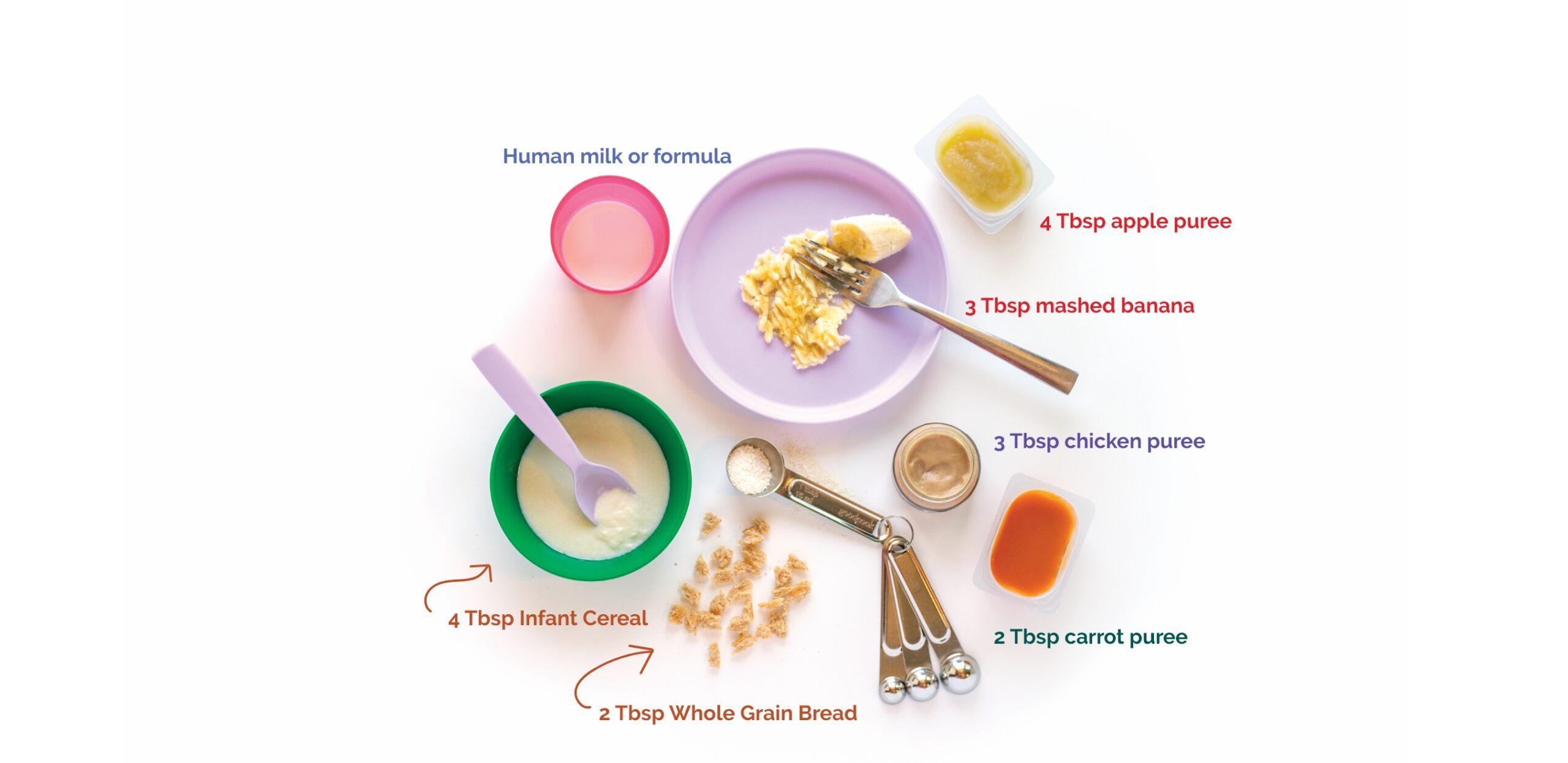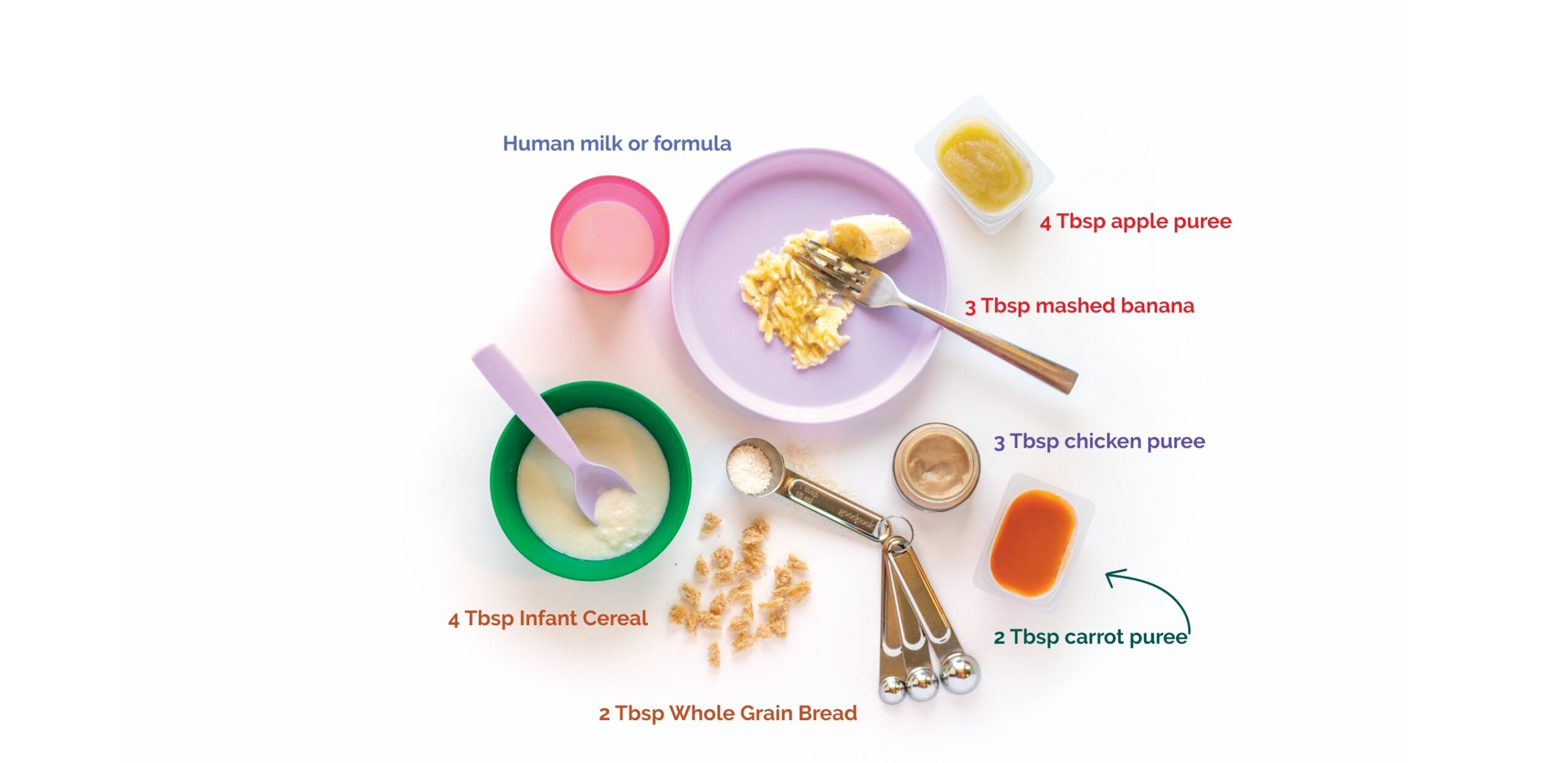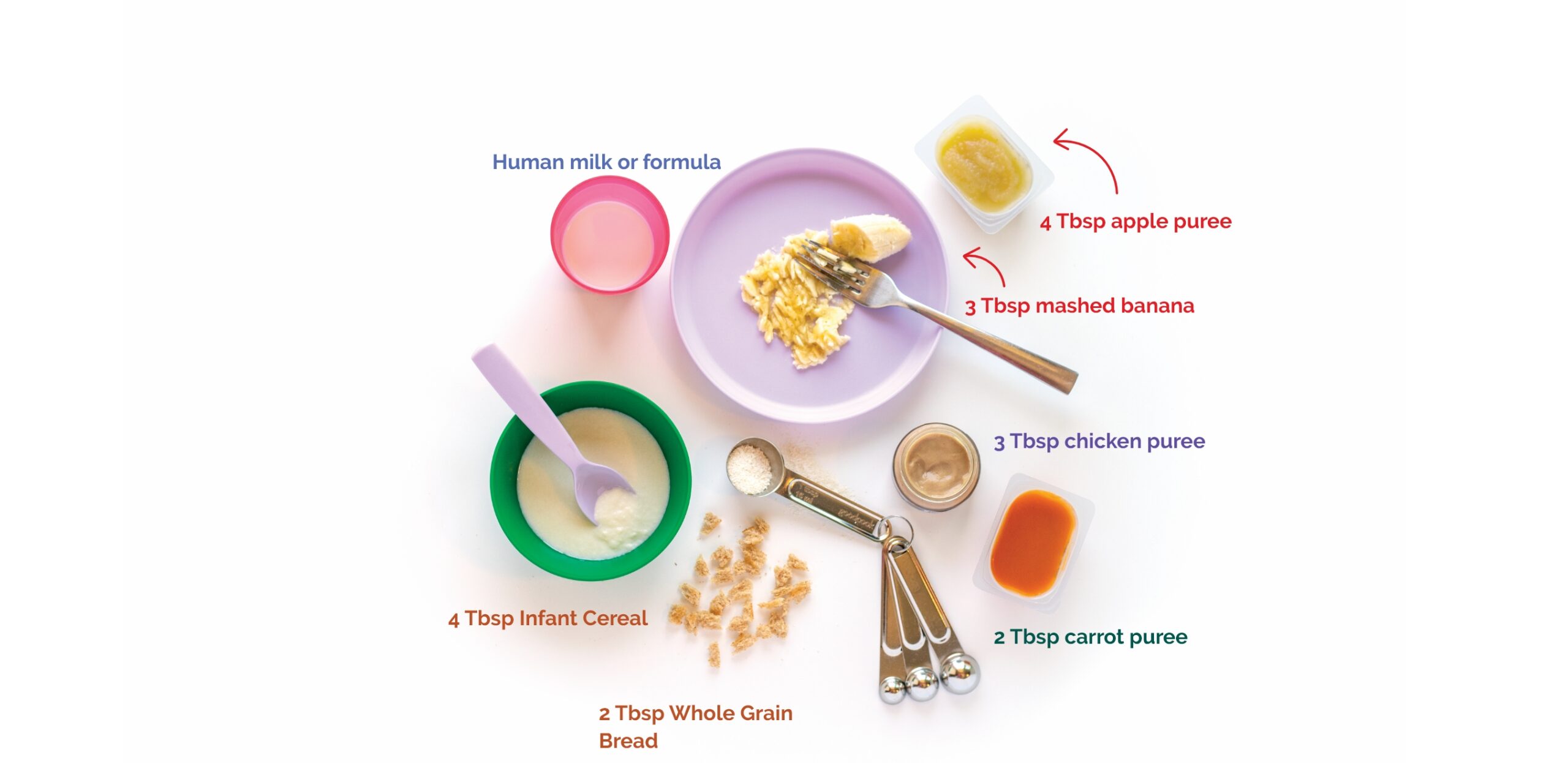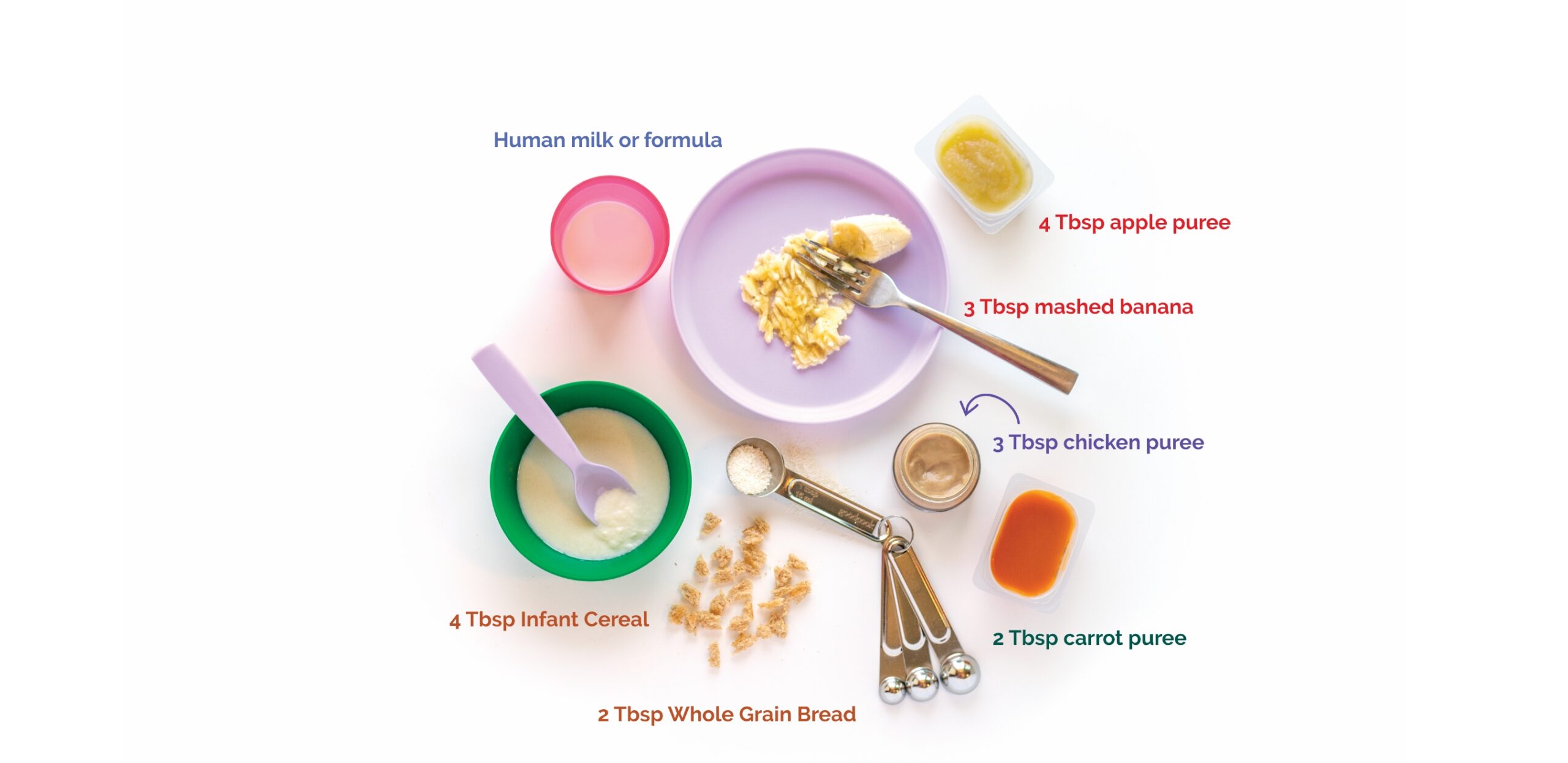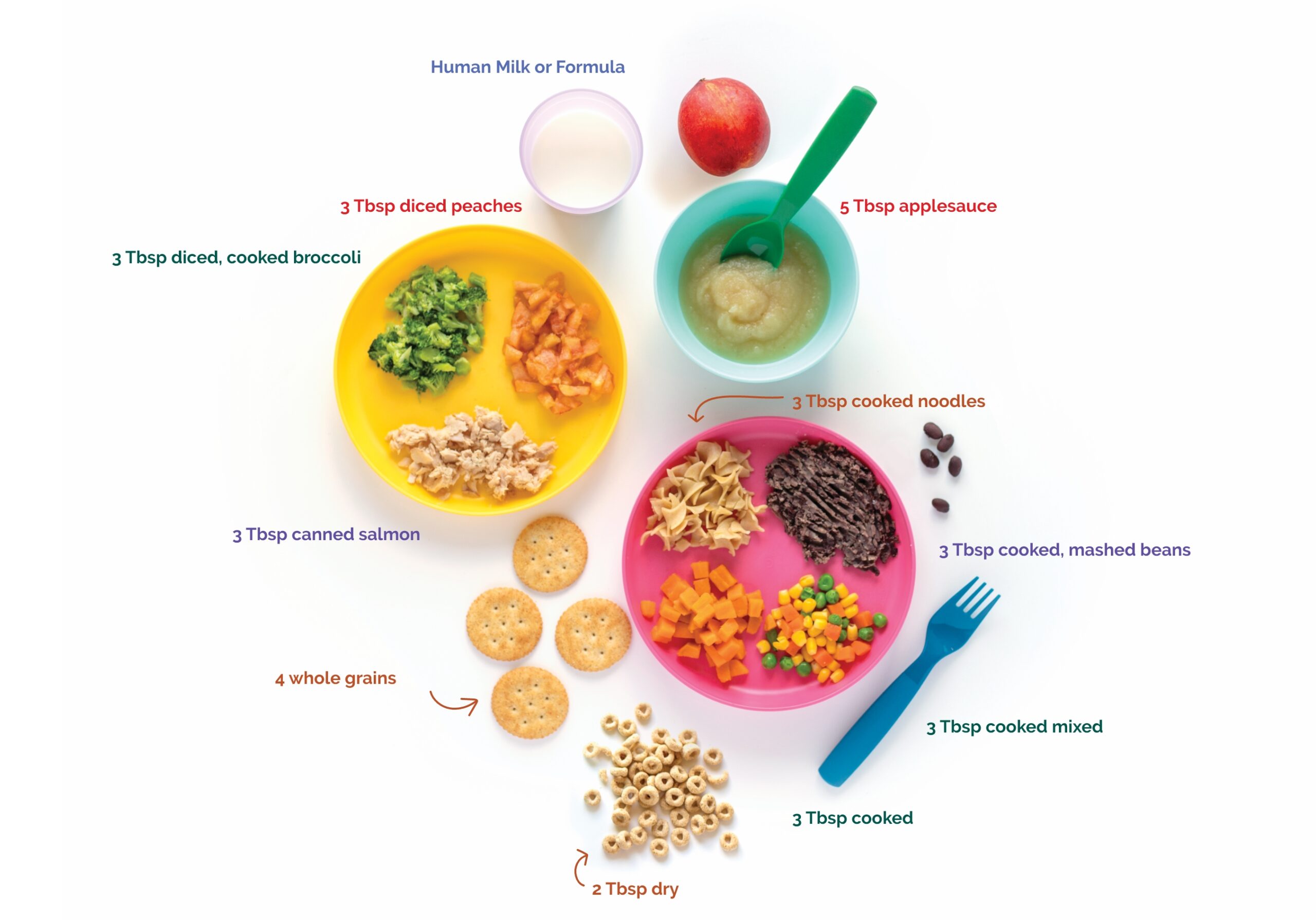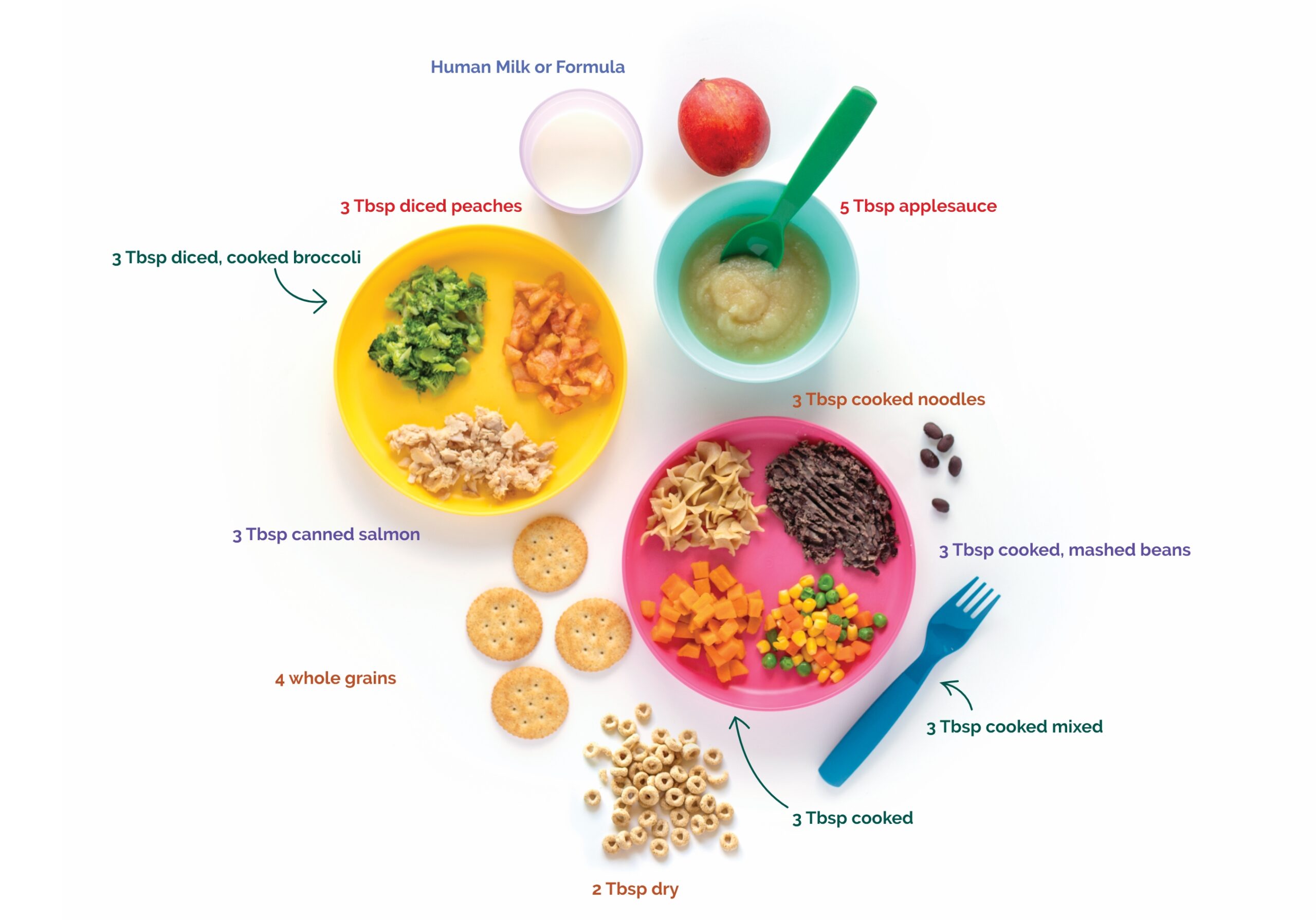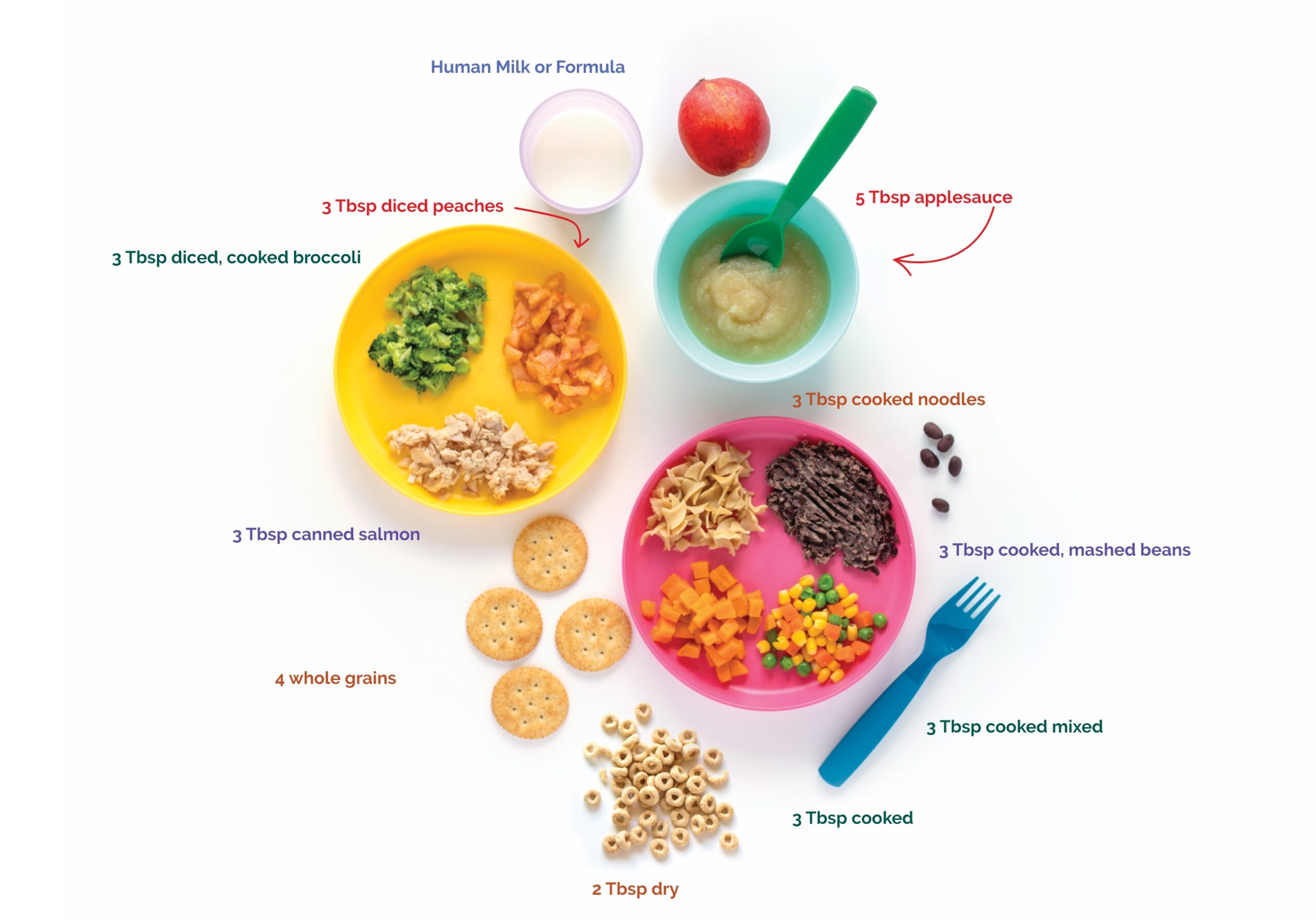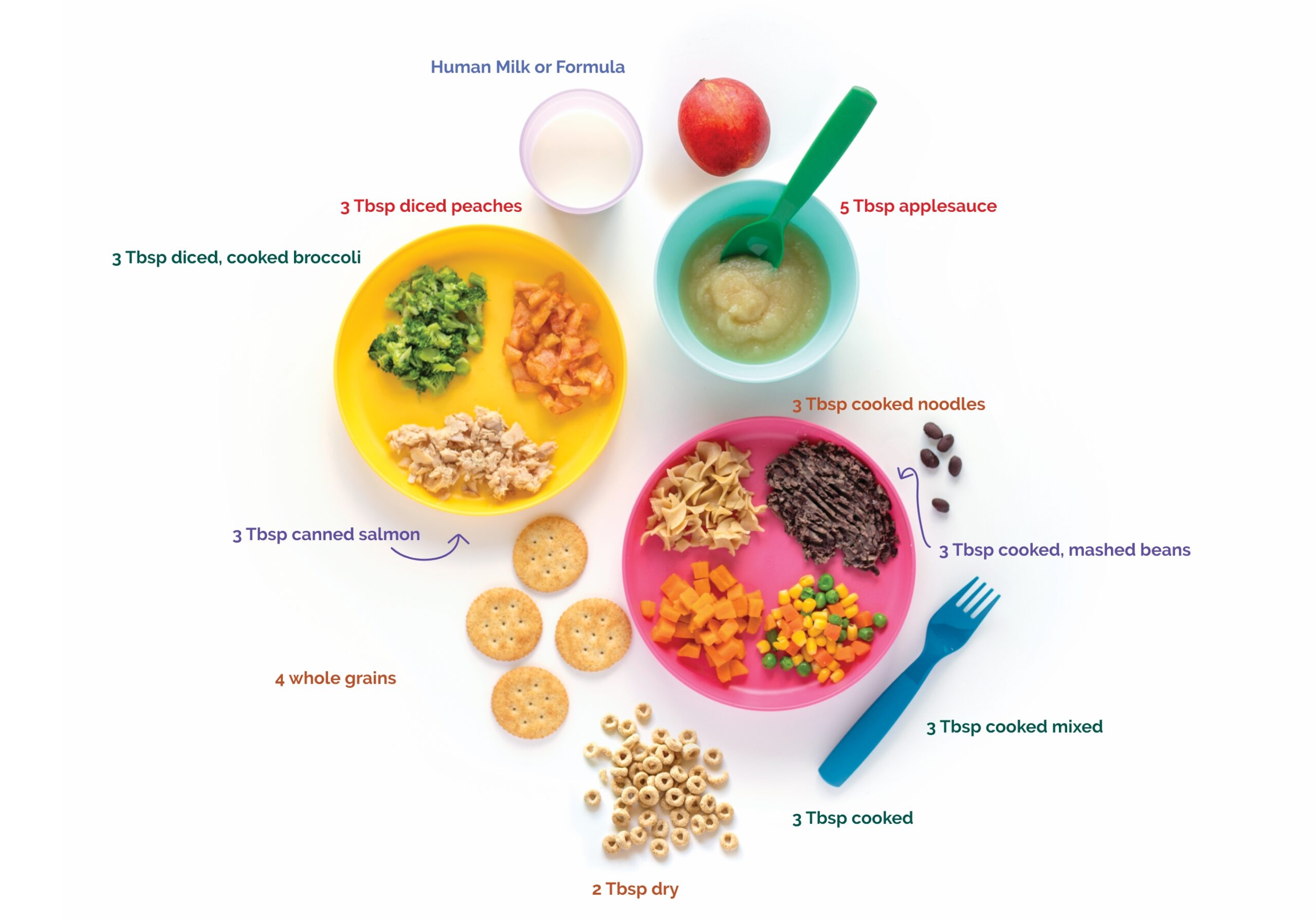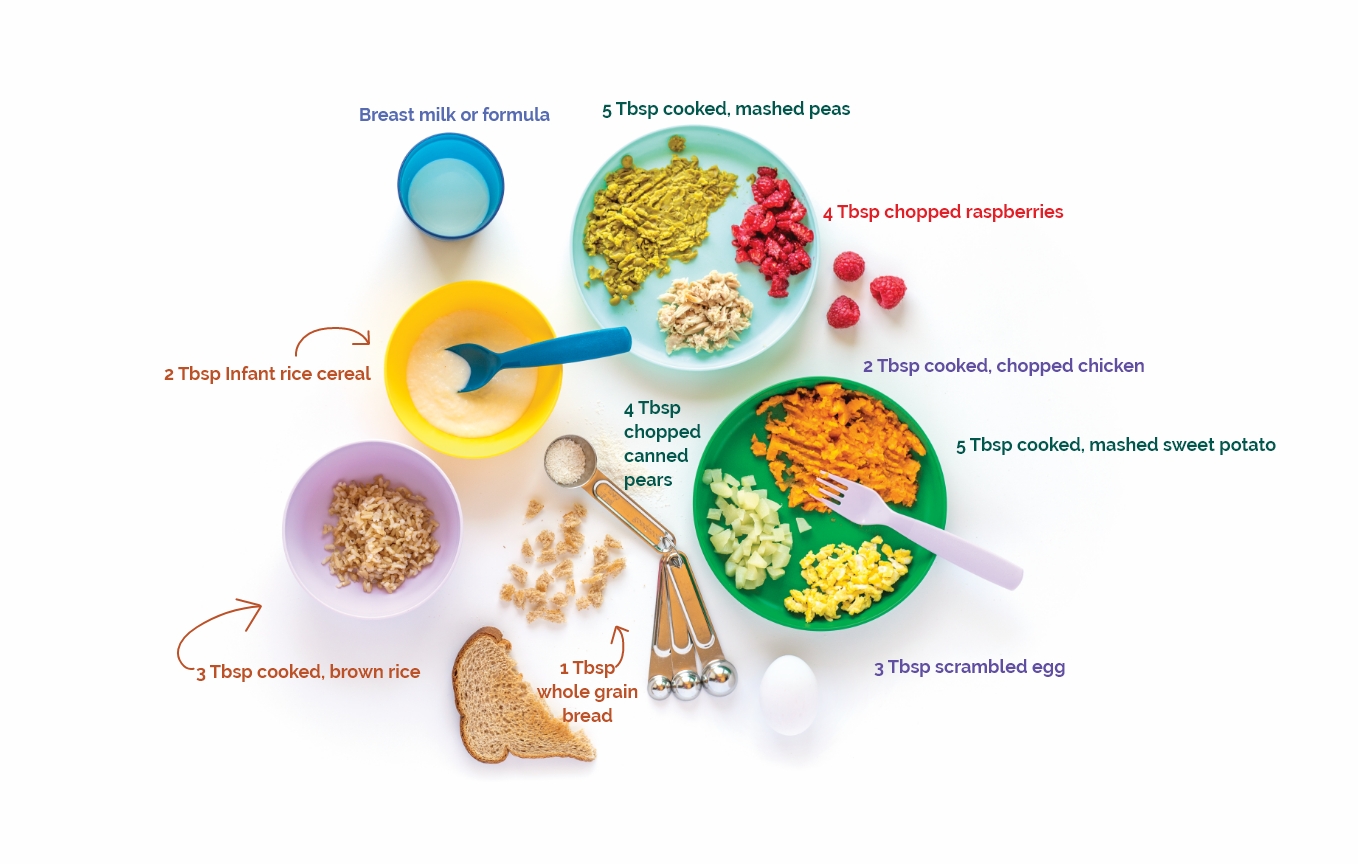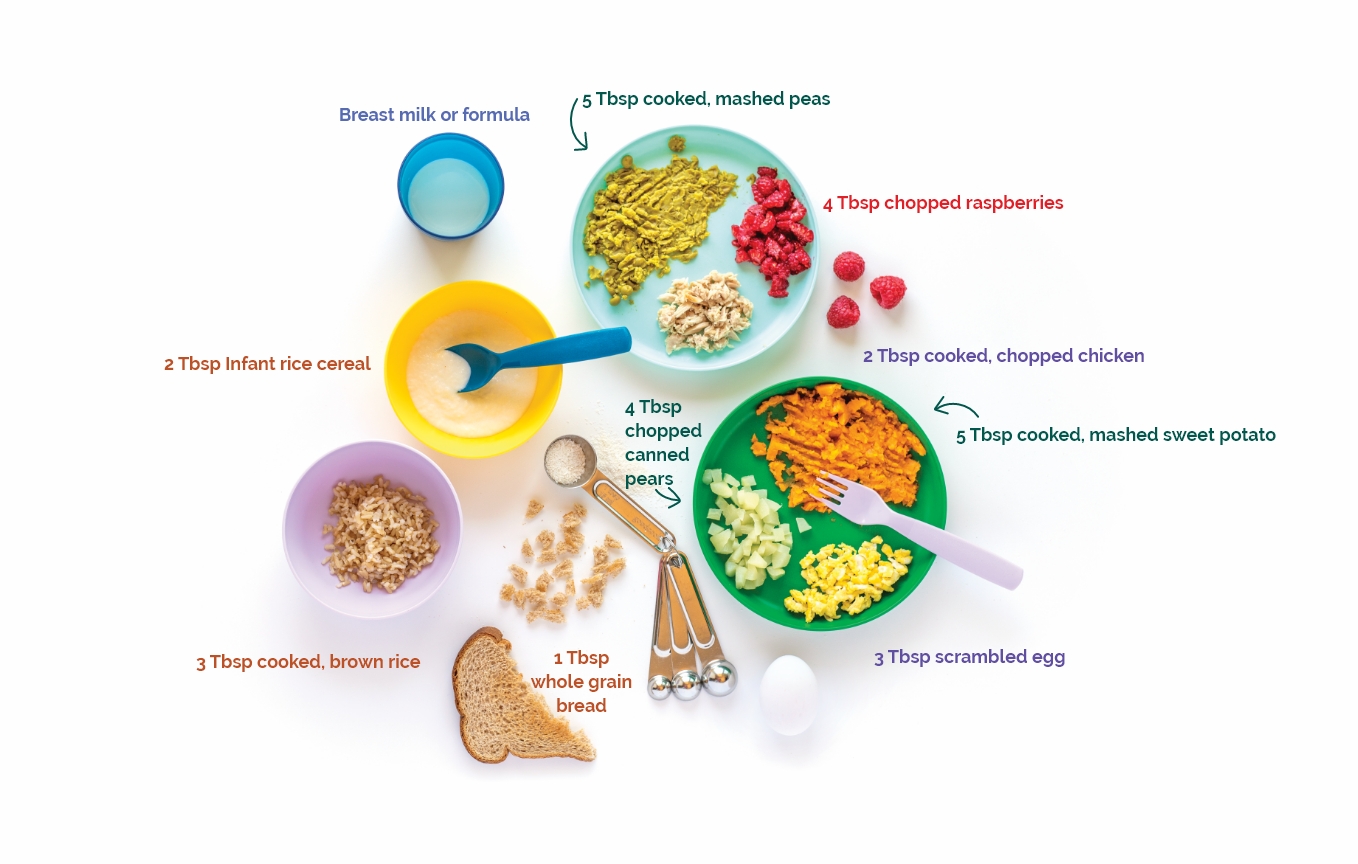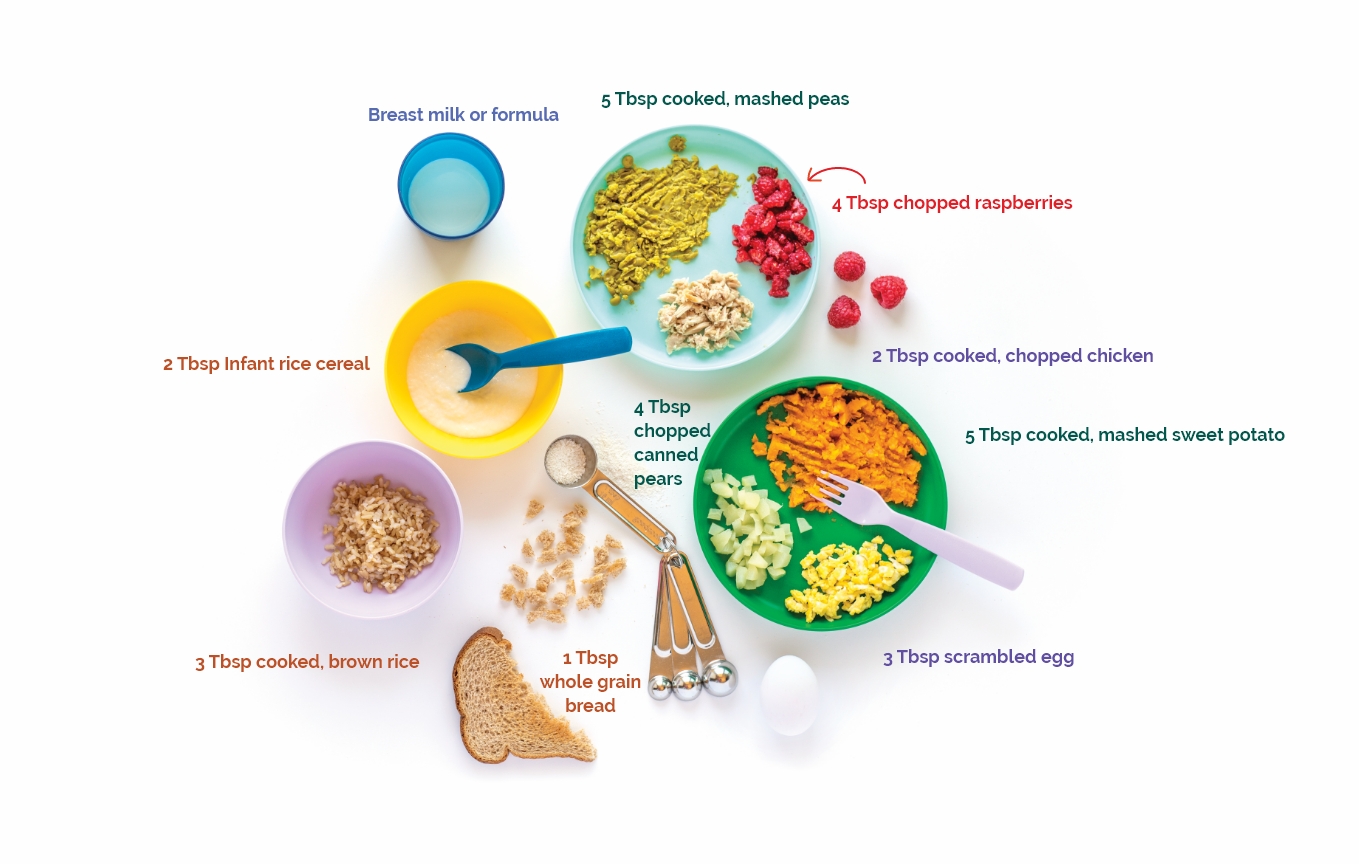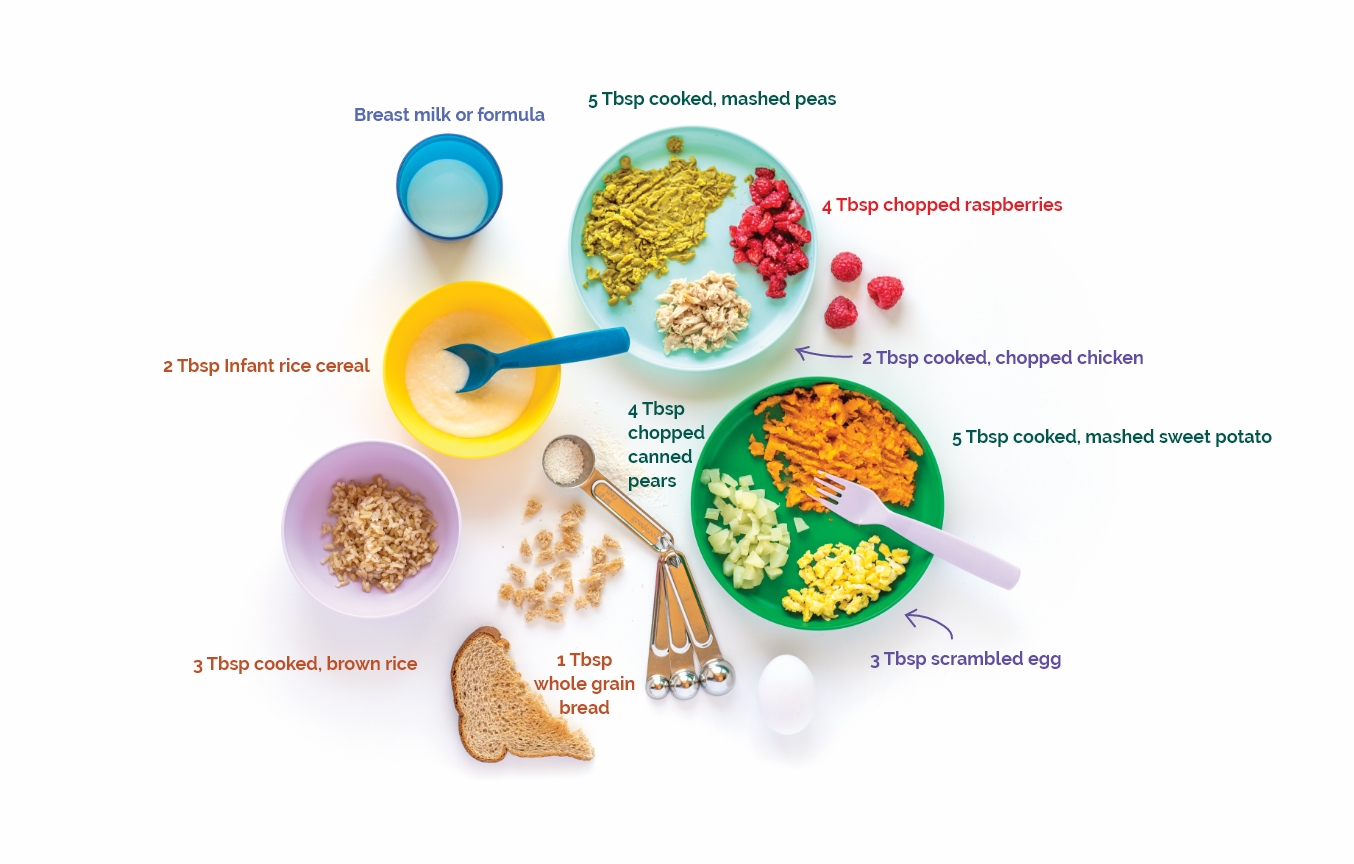
A healthy diet is important for everyone. Some new moms wonder if they should be on a special diet while breastfeeding. The answer is no. You can continue to enjoy the foods that are important to your family, including the meals you know and love.
Nutrition Tips
- Drink plenty of fluids to stay hydrated.
- Limit drinks with added sugars, like sodas and fruit drinks.
- Limit the amount of caffeine you get each day.
- Choose a variety of all food groups: fruits, vegetables, grains, dairy, and protein foods.
- Talk to your healthcare provider about taking a supplement.
- - In addition to healthy food choices, some women may need supplements.
Some Foods May Affect Your Milk
Sometimes a breastfed baby may be sensitive to something the mother eats.
The following symptoms could indicate your baby has an allergy or sensitivity to something you eat:
- Diarrhea, vomiting, green stools with mucus or blood
- Rash, eczema, dermatitis, hives, dry skin
- Fussiness during or after feedings
- Intense crying for long periods
- Sudden waking with discomfort
- Wheezing or coughing
These signs do not mean your baby is allergic to your milk, only to something that you ate.
You may need to stop eating whatever is bothering your baby or eat less of it. After a few months you may be able to eat the food again with better results.

Talk with your baby’s healthcare provider if you notice your baby having any food allergy symptoms. If your baby ever has problems breathing, call 911 or go to your nearest emergency room immediately.

Foods for
Breastfeeding Moms
Fruits
Vegetables
GRAINS
Proteins
Dairy
Fruits
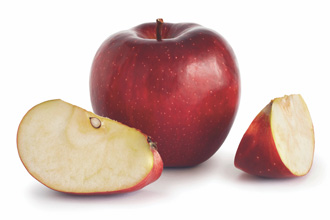
Amount:
2 cupsServing size:
- 1 cup fruit or 100% juice
- ½ cup dried fruit
Vegetables

Amount:
3 cupsServing size:
- 1 cup raw or cooked vegetables or 100% juice
- 2 cups raw leafy vegetables
GRAINS

Amount:
8 ouncesServing size:
- 1 slice bread
- 1 ounce ready-to-eat cereal
- ½ cup cooked pasta, rice, or cereal
Proteins

Amount:
6 ½ ouncesServing size:
- 1 ounce lean meat, poultry, or seafood
- ¼ cup cooked beans
- ½ ounce nuts or 1 Tbsp peanut butter
- 1 egg
Dairy

Amount:
3 cupsServing size:
- 1 cup milk
- 8 ounces yogurt
- 1 ½ ounces natural cheese
- 2 ounces processed cheese
Get A Daily Plan for Moms Designed Just for You
The USDA’s online, interactive tool can help you choose foods based on your baby’s nursing habits and your energy needs.

Vegan
Diets
If you follow a diet that does not include any form of animal protein you or your baby might not get enough vitamin B-12.
In babies, not enough B-12 can cause symptoms such as:
- Loss of appetite
- Slow motor development
- Being very tired
- Weak muscles
- Vomiting
You can help protect your and your baby’s health by taking vitamin B-12 supplements while breastfeeding. Talk to your healthcare provider about your supplement needs.
Fitness
Being active helps you stay healthy, feel better, and have more energy. It does not affect the quality or quantity of your milk or your baby’s growth. Unless your doctor tells you not to be active, include 2½ hours of physical activity each week.
Start with a 10 or 15-minute activity that you can do most days throughout the week.
Advice About Eating Fish
Fish and other protein-rich foods have nutrients that can help your baby’s growth and development. Some fish have higher levels of mercury, which can pass to your baby through human milk. Exposure to mercury can harm your baby’s brain and nervous system development. This chart can help you choose which fish to eat, and how often to eat them, based on their mercury levels.
- Anchovy
- Atlantic croaker
- Atlantic mackerel
- Black sea bass
- Butterfish
- Catfish
- Clam
- Cod
- Crab
- Crawfish
- Flounder
- Haddock
- Hake
- Herring
- Lobster, American and spiny
- Mullet
- Oyster
- Pacific chub mackerel
- Perch, freshwater, and ocean
- Pickerel
- Plaice
- Pollock
- Salmon
- Sardine
- Scallop
- Shad
- Shrimp
- Skate
- Smelt
- Sole
- Squid
- Tilapia
- Trout, canned light (includes skipjack)
- Whitefish
- Whiting
- Bluefish
- Buffalofish
- Carp
- Chilean sea bass/Patagonian toothfish
- Grouper
- Halibut
- Mahi mahi/dolphinfish
- Monkfish
- Rockfish
- Sablefish
- Sheepshead
- Snapper
- Spanish mackerel
- Striped bass (ocean)
- Tilefish (Atlantic Ocean)
- Tuna, albacore/white tuna, canned and fresh/frozen
- Tuna, yellowfin
- Weakfish/seatrout
- White croaker/Pacific croaker
- King mackerel
- Marlin
- Orange roughy
- Shark
- Swordfish
- Tilefish (Gulf of Mexico)
- Tuna, bigeye
